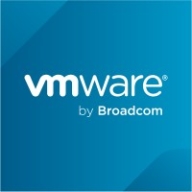

VMware Cloud Director and OpenText Cloud Service Automation compete in cloud management solutions, with VMware having an upper hand due to its comprehensive features and competitive pricing while OpenText excels in automation capabilities.
Features: VMware Cloud Director provides robust workload management, scalability, and resource pooling that enable efficient cloud service delivery. OpenText Cloud Service Automation offers advanced automation processes and strong orchestration of complex workflows.
Room for Improvement: VMware Cloud Director could enhance its automation features, simplify deployment, and improve integration with non-VMware platforms. OpenText could expand its feature set beyond automation, offer more competitive pricing, and improve resource management efficiency.
Ease of Deployment and Customer Service: VMware Cloud Director offers flexible deployment options and reliable customer support for smooth integration. OpenText Cloud Service Automation ensures a straightforward and quick deployment process, providing an advantage for rapid implementation needs.
Pricing and ROI: VMware Cloud Director is known for its competitive pricing and favorable ROI through efficient resource utilization. OpenText Cloud Service Automation, while having higher setup costs, provides significant long-term savings with its automation capabilities.
| Product | Market Share (%) |
|---|---|
| VMware Cloud Director | 5.4% |
| OpenText Cloud Service Automation | 0.7% |
| Other | 93.9% |


| Company Size | Count |
|---|---|
| Small Business | 1 |
| Large Enterprise | 6 |
| Company Size | Count |
|---|---|
| Small Business | 24 |
| Midsize Enterprise | 11 |
| Large Enterprise | 36 |
OpenText Cloud Service Automation provides open, heterogeneous, extensible enterprise-grade cloud service lifecycle management to design and orchestrate full stack services. CSA embraces existing automation assets with an enhanced orchestration engine, which provides IT with an informed, transparent delivery of secure compliant services for the hybrid cloud.
VMware Cloud Director, also known as vCloud Director, is a cloud management tool that offers secure, flexible, and efficient cloud resources to thousands of enterprises and IT teams across the world. The solution serves as one of the leading cloud service-delivery platforms for businesses that want to manage and operate their services effectively. By deploying this solution, companies can benefit from virtualized networking, computing, security, and storage. These benefits can be received in a timely manner, as the infrastructure of the product is operationally ready within minutes and clients do not need to install and configure physical infrastructure.
One of the biggest advantages of vCloud Director is that it allows users to build cloud-ready applications. In several ways, it facilitates the process for developers, including:
vCloud Director Features
This VMware product has various features through which users can virtualize their data and benefit from quality management solutions. Among the popular capabilities of vCloud Director are:
vCloud Director Benefits
VMware vCloud Director offers various benefits to its users. Some of these include:
Reviews from Real Users
Ajit Y., a cloud architect at a computer software company, likes VMware vCloud Director because it is a stable, truly multitenant software and the go-to tool for infrastructure as a service.
Kashif F., a divisional engineer at National Telecom Corporatio, rates vCloud Director highly because the product can be used for infrastructure provisioning without using a platform service.
We monitor all Cloud Management reviews to prevent fraudulent reviews and keep review quality high. We do not post reviews by company employees or direct competitors. We validate each review for authenticity via cross-reference with LinkedIn, and personal follow-up with the reviewer when necessary.